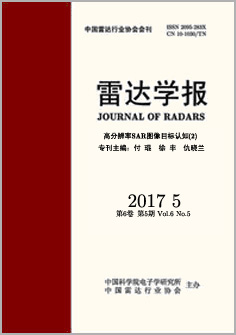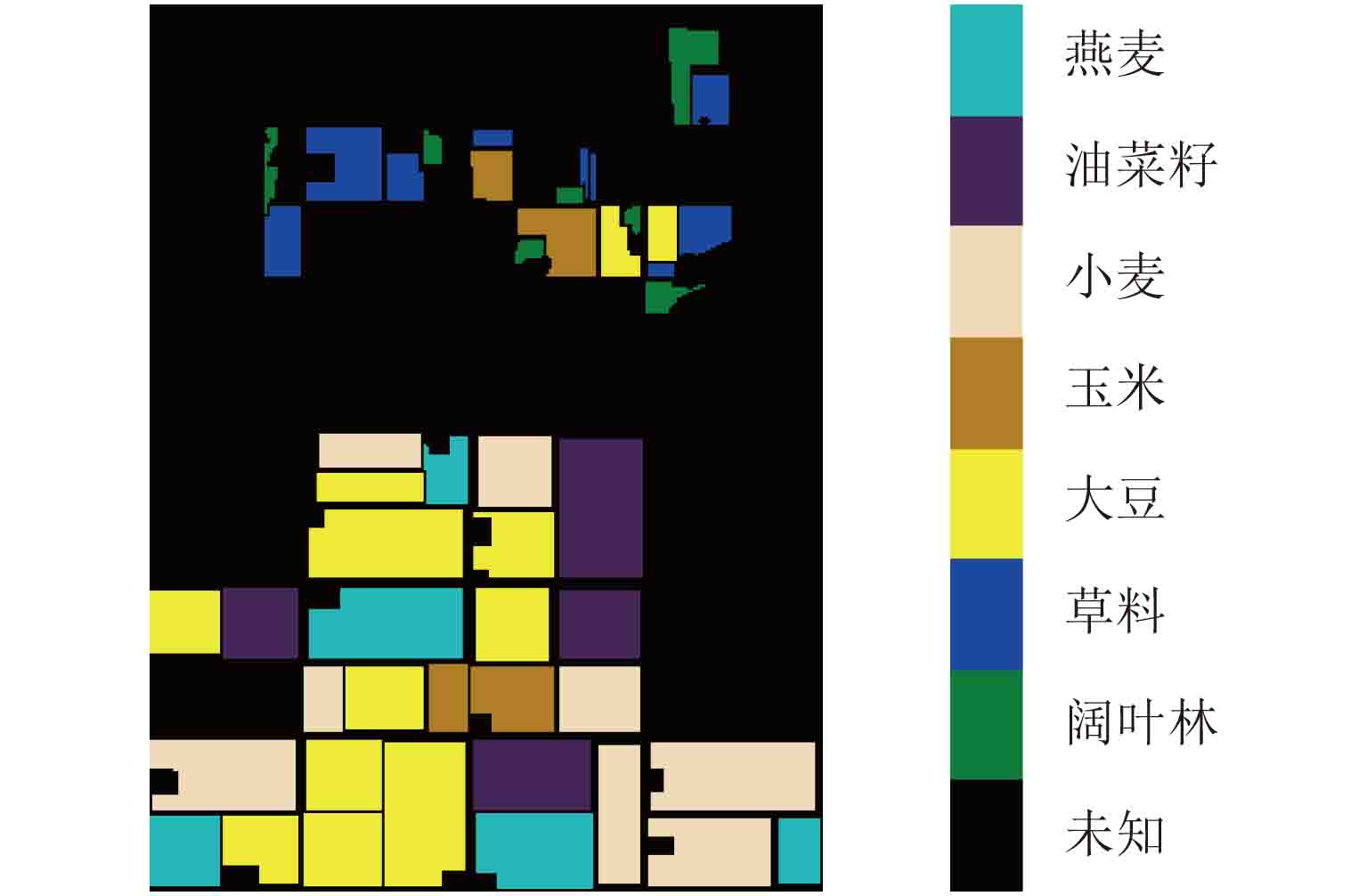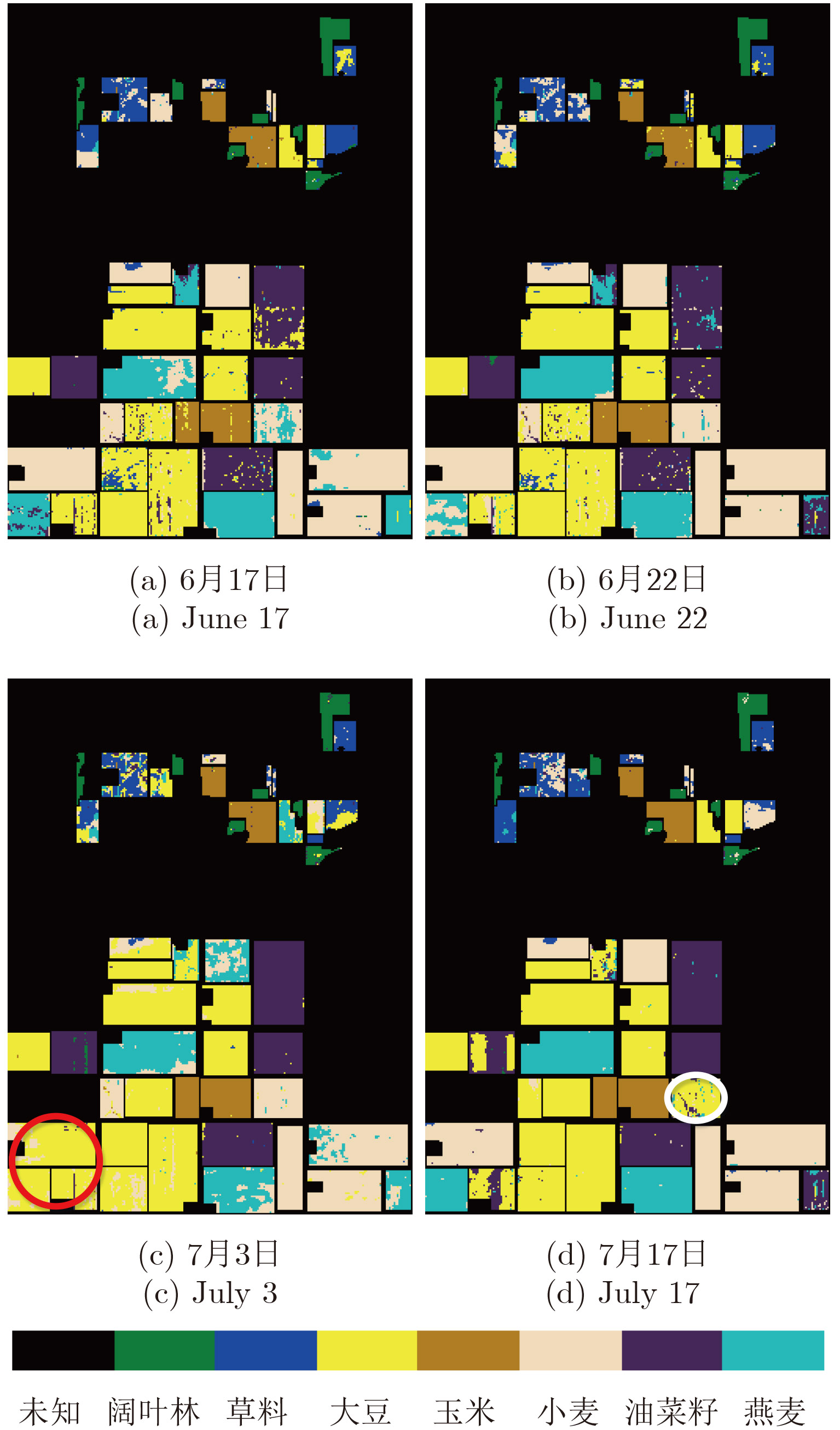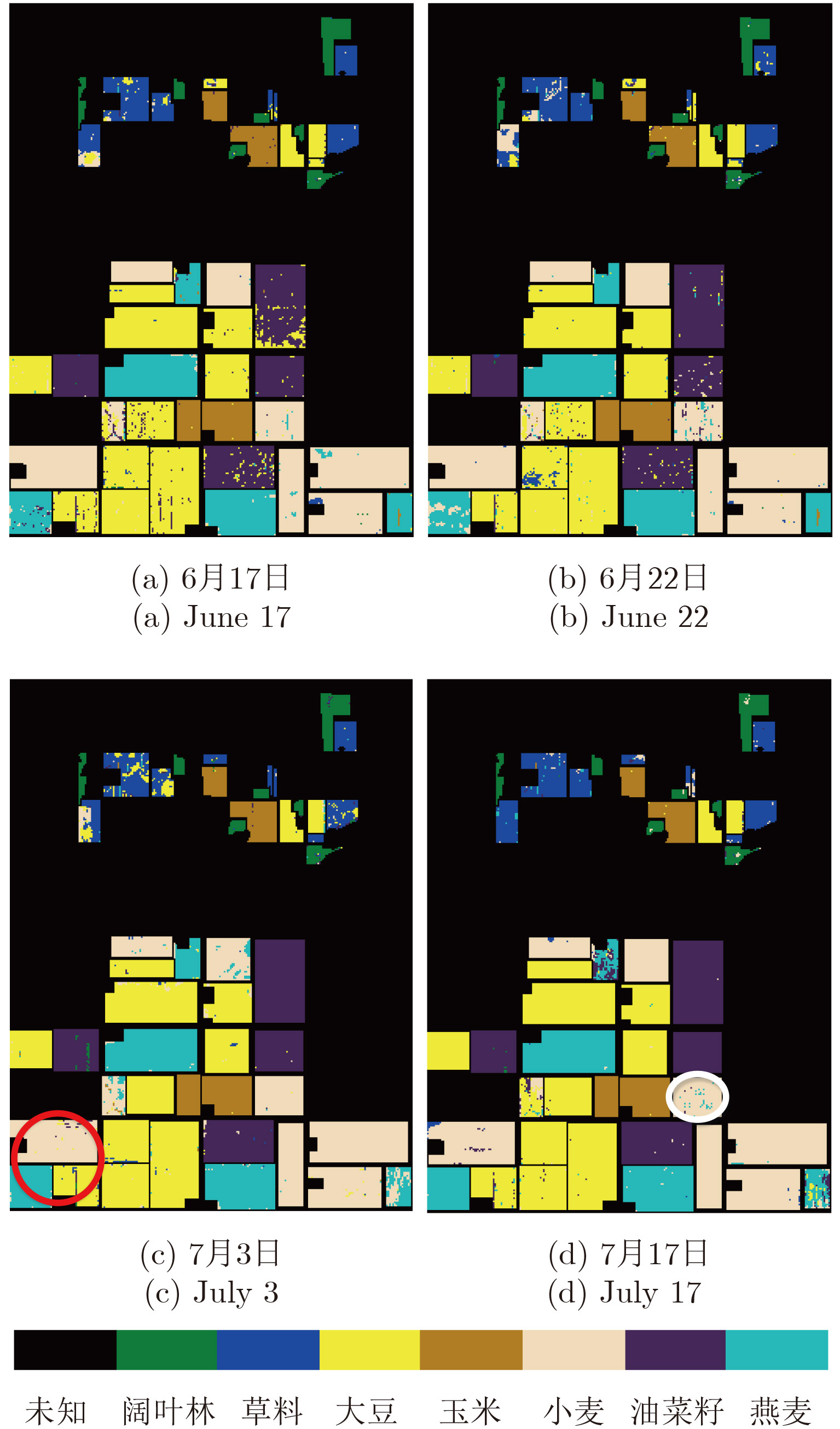- Home
- Articles & Issues
-
Data
- Dataset of Radar Detecting Sea
- SAR Dataset
- SARGroundObjectsTypes
- SARMV3D
- AIRSAT Constellation SAR Land Cover Classification Dataset
- 3DRIED
- UWB-HA4D
- LLS-LFMCWR
- FAIR-CSAR
- MSAR
- SDD-SAR
- FUSAR
- SpaceborneSAR3Dimaging
- Sea-land Segmentation
- SAR Multi-domain Ship Detection Dataset
- SAR-Airport
- Hilly and mountainous farmland time-series SAR and ground quadrat dataset
- SAR images for interference detection and suppression
- HP-SAR Evaluation & Analytical Dataset
- GDHuiYan-ATRNet
- Multi-System Maritime Low Observable Target Dataset
- DatasetinthePaper
- DatasetintheCompetition
- Report
- Course
- About
- Publish
- Editorial Board
- Chinese
| Citation: | Tao Chensong, Chen Siwei, Li Yongzhen, Xiao Shunping. Polarimetric SAR Terrain Classification Using Polarimetric Features Derived from Rotation Domain[J]. Journal of Radars, 2017, 6(5): 524-532. doi: 10.12000/JR16131 |
Polarimetric SAR Terrain Classification Using Polarimetric Features Derived from Rotation Domain
DOI: 10.12000/JR16131 CSTR: 32380.14.JR16131
-
Abstract
Terrain classification is an important application for understanding and interpreting Polarimetric Synthetic Aperture Radar (PolSAR) images. One common PolSAR terrain classification uses roll-invariant feature parameters such as H/A/α/SPAN. However, the back scattering response of a target is closely related to its orientation and attitude. This frequently introduces ambiguity in the interpretation of scattering mechanisms and limits the accuracy of the PolSAR terrain classification, which only uses roll-invariant feature parameters for classification. To address this problem, the uniform polarimetric matrix rotation theory, which interprets a target’s scattering properties when its polarimetric matrix is rotated along the radar line of sight and derives a series of polarimetric features to describe hidden information of the target in the rotation domain was proposed. Based on this theory, in this study, we apply the polarimetric features in the rotation domain to PolSAR terrain discrimination and classification, and develop a PolSAR terrain classification method using both the polarimetric features in the rotation domain and the roll-invariant features of H/A/α/SPAN. This method also uses both the selected polarimetric feature parameters in the rotation domain and H/A/α/SPAN as input for a Support Vector Machine (SVM) classifier and achieves better classification performance by complementing the terrain discrimination abilities of both. Results from comparison experiments based on AIRSAR and UAVSAR data demonstrate that compared with the conventional method, which only uses H/A/α/SPAN as SVM classifier input, the proposed method can achieve higher classification accuracy and better robustness. For fifteen terrain classes of AIRSAR data, the total classification accuracy of the proposed method was 92.3%, which is higher than the 91.1% of the conventional method. Moreover, for seven terrain classes of multi-temporal UAVSAR data, the averaged total classification accuracy of the proposed method was 95.72%, which is much higher than the 87.80% of the conventional method. These results demonstrate that our proposed method has better robustness for multi-temporal data. The research also demonstrates that mining and extracting polarimetric scattering information of a target deep in the rotation domain provides a feasible new approach for PolSAR image interpretation and application. -

-
References
[1] Lee J S and Pottier E. Polarimetric Radar Imaging: From Basics to Applications[M]. Boca Raton, FL, USA, CRC Press, 2009.[2] 吴永辉, 计科峰, 郁文贤. SVM全极化SAR图像分类中的特征选择[J]. 信号处理, 2007, 23(6): 877–881. http://www.cnki.com.cn/Article/CJFDTOTAL-XXCN200706021.htmWu Yonghui, Ji Kefeng, and Yu Wenxian. A new feature selection algorithm for SVM-based fully polarimetric SAR image classification[J]. Signal Processing, 2007, 23(6): 877–881. http://www.cnki.com.cn/Article/CJFDTOTAL-XXCN200706021.htm[3] Cloude S R and Pottier E. A review of target decomposition theorems in radar polarimetry[J]. IEEE Transactions on Geoscience and Remote Sensing, 1996, 34(2): 498–518. doi: 10.1109/36.485127[4] Freeman A and Durden S L. A three-component scattering model for polarimetric SAR data[J]. IEEE Transactions on Geoscience and Remote Sensing, 1998, 36(3): 963–973. doi: 10.1109/36.673687[5] Yamaguchi Y, Moriyama T, Ishido M, et al.. Four-component scattering model for polarimetric SAR image decomposition[J]. IEEE Transactions on Geoscience and Remote Sensing, 2005, 43(8): 1699–1706. doi: 10.1109/TGRS.2005.852084[6] Chen S W, Wang X S, Xiao S P, et al.. General polarimetric model-based decomposition for coherency matrix[J]. IEEE Transactions on Geoscience and Remote Sensing, 2014, 52(3): 1843–1855. doi: 10.1109/TGRS.2013.2255615[7] Chen S W, Li Y Z, Wang X S, et al.. Modeling and interpretation of scattering mechanisms in polarimetric synthetic aperture radar: Advances and perspectives[J]. IEEE Signal Processing Magazine, 2014, 31(4): 79–89. doi: 10.1109/MSP.2014.2312099[8] Cloude S R and Pottier E. An entropy based classification scheme for land applications of polarimetric SARs[J]. IEEE Transactions on Geoscience and Remote Sensing, 1997, 35(1): 68–78. doi: 10.1109/36.551935[9] Lee J S, Grunes M R, Ainsworth T L, et al.. Unsupervised classification of polarimetric SAR images by applying target decomposition and complex Wishart distribution[J]. IEEE Transactions on Geoscience and Remote Sensing, 1999, 37(5): 2249–2258. doi: 10.1109/36.789621[10] 赵一博. 基于SVM和RBF神经网络的极化SAR图像分类方法研究[D]. [硕士论文], 国防科学技术大学, 2013.Zhao Yibo. Classification of polarimetric SAR image based on SVM and RBF neural network[D]. [Master dissertation], National University of Defense Technology, 2013.[11] 吴永辉, 计科峰, 郁文贤. 基于H-alpha和改进C-均值的全极化SAR图像非监督分类[J]. 电子与信息学报, 2007, 29(1): 30–34. http://www.cnki.com.cn/Article/CJFDTOTAL-DZYX200701007.htmWu Yonghui, Ji Kefeng, and Yu Wenxian. Unsupervised classification of fully polarimetric SAR image using H-alpha decomposition and modified C-Mean algorithm[J]. Journal of Electronics & Information Technology, 2007, 29(1): 30–34. http://www.cnki.com.cn/Article/CJFDTOTAL-DZYX200701007.htm[12] Chen S W, Wang X S, and Sato M. Uniform polarimetric matrix rotation theory and its applications[J]. IEEE Transactions on Geoscience and Remote Sensing, 2014, 52(8): 4756–4770. doi: 10.1109/TGRS.2013.2284359[13] Chen S W, Li Y Z, and Wang X S. Crop discrimination based on polarimetric correlation coefficients optimization for PolSAR data[J]. International Journal of Remote Sensing, 2015, 36(16): 4233–4249. doi: 10.1080/01431161.2015.1079345[14] Xiao S P, Chen S W, Chang Y L, et al.. Polarimetric coherence optimization and its application for manmade target extraction in PolSAR data[J]. IEICE Transactions on Electronics, 2014, 97(6): 566–574.[15] Chang C C and Lin C J. LIBSVM: Alibrary for support vector machines[J]. ACM Transactions on Intelligent Systems and Technology, 2011, 2(3): 389–396.[16] Chen S W, Wang X S, and Sato M. PolInSAR complex coherence estimation based on covariance matrix similarity test[J]. IEEE Transactions on Geoscience and Remote Sensing, 2012, 50(11): 4699–4709. doi: 10.1109/TGRS.2012.2192937 -
Proportional views

- Figure 1. Flowchart of proposed method
- Figure 2. AIRSAR data
- Figure 3. Classification results of AIRSAR data
- Figure 4. Filtered Pauli RGB images of multi-temporal UAVSAR data
- Figure 5. Gound truth of the multi-temporal data
- Figure 6. Classification results of multi-temporal UAVSAR data using conventional method
- Figure 7. Classification results of multi-temporal UAVSAR data using proposed method


 Submit Manuscript
Submit Manuscript Peer Review
Peer Review Editor Work
Editor Work





 DownLoad:
DownLoad:





